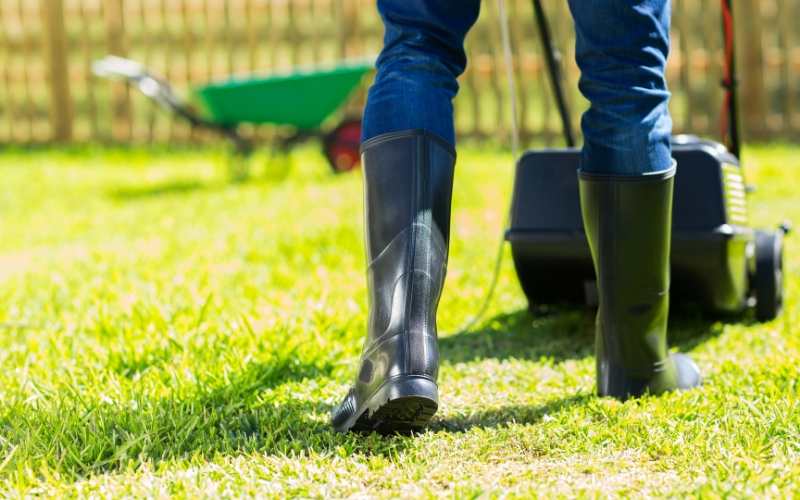If you’ve never before heard of lawn aerating, then, this is not something you or your lawn care service need to do all of the time. Lawn aerating is an essential step in every lawn care routine. Although it’s not something you need to do all of the time, it is a critical step in ensuring your grass grows as strong and healthy as ever.
It’s easier than you might think! So, to help you get started here is a lawn aeration guide for you to help you learn about the benefits of aerating, and how to do it.
Lawn Aeration • Reasons & Benefits

What is Lawn Aeration?
At its core, the purpose of lawn aeration is to improve the air exchange between the soil and the surrounding atmosphere. It removes small plugs of soil from the lawn, which works to improve air circulation. Air is an essential part of nutrient-dense soil to promote growth in anything planted in it.
Aeration is not something you need to do regularly, nor do you need to perform this technique simply to grow grass because it grows just about anywhere. However, aerating the lawn every three to five years helps boost the health and therefore its appearance.
What Are the Benefits?
There are many benefits to aerating your lawn that helps it grow. As mentioned above, the purpose of lawn aeration is to improve the air exchange between the atmosphere and soil. Just as all living things need to breathe, so does your grass.
It’s necessary because people and animals walk over the grass, which packs it down and compacts the soil. When this happens, there is no room for air circulation. As a result, you may notice that water pools in parts of lawn where the ground is compacted. This is because the water cannot thoroughly penetrate the soil, which leads to pools of water forming. Aeration breaks up the soil and makes way for air circulation and gives water a chance to penetrate deep into the ground.

Aeration also helps improve fertilizer uptake. After a while, thatch (an organic layer under the grass) also builds up and creates a barrier. Just like water doesn’t penetrate the soil when it’s compacted down, the same goes for fertilizer. By removing plugs of soil, it creates room for the fertilizer to seep into the ground and allows the roots to access the nutrients which help break up the thatch so it continues to decompose.
Overall, aeration improves the growing condition of your lawn. It helps to loosen up the soil so that there is air circulation, water penetration, and the roots can continue to grow deep. You’ll enjoy an attractive, strong, resilient, and cushioned lawn.
General Tips on Aeration
The best time to aerate your lawn depends on the type of grass you have. It’s best to aerate cool-season turf between March and May, or between August and November. For warm-season grass, mid-spring to summer is the best time. However, avoid doing so in the dormant seasons to prevent weeds from forming.
A good way to determine if your lawn needs aerating is to dig a section of grass to examine the roots. If the roots do not go past two inches deep, it’s time to aerate the lawn.
To prepare the lawn for aeration, water it up to two days before. This helps soften the soil for the aeration machine to thoroughly penetrate the ground.
Your Healthy & Beautiful Lawn

Here’s to your dreams of a lush and healthy lawn throughout the summer months. Follow these suggestions and you’re sure to have a fantastic lawn in no time. We’ve also included some links for your exterior design inspiration and enjoyment.
All Images Courtesy of Canva.
Other Posts You Might Enjoy:
4 Steps to a Pet-Friendly Yard for Your Home
4 Tips to Pet-proof Your Lawn and Garden





